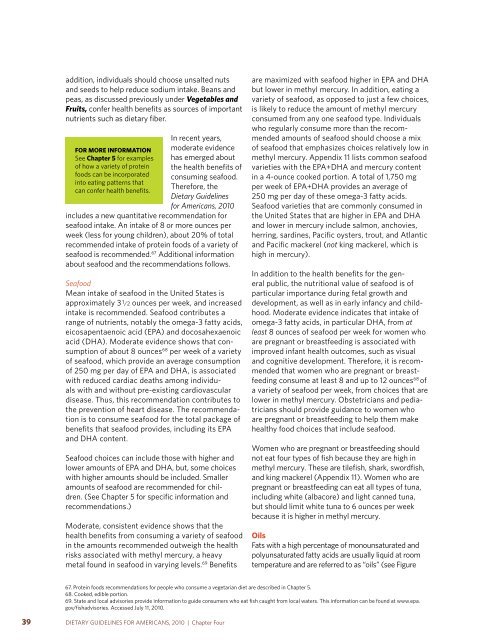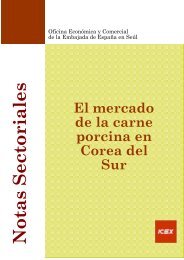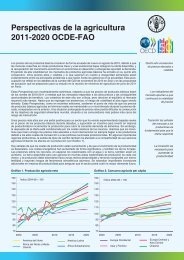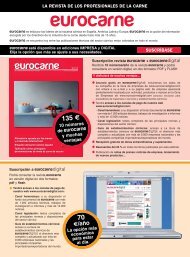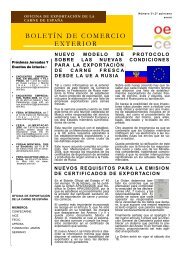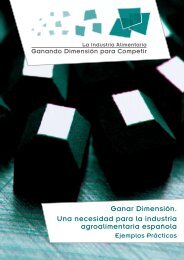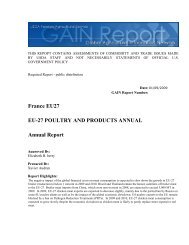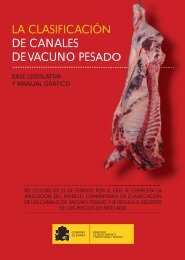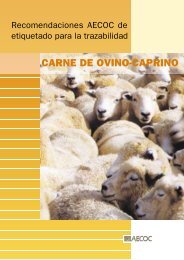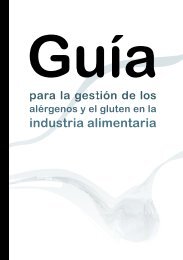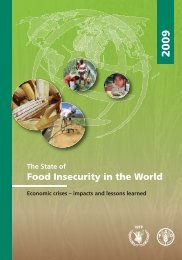Dietary Guidelines for Americans - SchoolNutritionAndFitness.com
Dietary Guidelines for Americans - SchoolNutritionAndFitness.com
Dietary Guidelines for Americans - SchoolNutritionAndFitness.com
- No tags were found...
You also want an ePaper? Increase the reach of your titles
YUMPU automatically turns print PDFs into web optimized ePapers that Google loves.
addition, individuals should choose unsalted nutsand seeds to help reduce sodium intake. Beans andpeas, as discussed previously under Vegetables andfruits, confer health benefits as sources of importantnutrients such as dietary fiber.<strong>for</strong> More in<strong>for</strong>MationSee chapter 5 <strong>for</strong> examplesof how a variety of proteinfoods can be incorporatedinto eating patterns thatcan confer health benefits.In recent years,moderate evidencehas emerged aboutthe health benefits ofconsuming seafood.There<strong>for</strong>e, the<strong>Dietary</strong> <strong>Guidelines</strong><strong>for</strong> <strong>Americans</strong>, 2010includes a new quantitative re<strong>com</strong>mendation <strong>for</strong>seafood intake. An intake of 8 or more ounces perweek (less <strong>for</strong> young children), about 20% of totalre<strong>com</strong>mended intake of protein foods of a variety of67seafood is re<strong>com</strong>mended. Additional in<strong>for</strong>mationabout seafood and the re<strong>com</strong>mendations follows.SeafoodMean intake of seafood in the United States isapproximately 3 1 /2 ounces per week, and increasedintake is re<strong>com</strong>mended. Seafood contributes arange of nutrients, notably the omega-3 fatty acids,eicosapentaenoic acid (EPA) and docosahexaenoicacid (DHA). Moderate evidence shows that consumptionof about 8 ounces 68 per week of a varietyof seafood, which provide an average consumptionof 250 mg per day of EPA and DHA, is associatedwith reduced cardiac deaths among individualswith and without pre-existing cardiovasculardisease. Thus, this re<strong>com</strong>mendation contributes tothe prevention of heart disease. The re<strong>com</strong>mendationis to consume seafood <strong>for</strong> the total package ofbenefits that seafood provides, including its EPAand DHA content.Seafood choices can include those with higher andlower amounts of EPA and DHA, but, some choiceswith higher amounts should be included. Smalleramounts of seafood are re<strong>com</strong>mended <strong>for</strong> children.(See Chapter 5 <strong>for</strong> specific in<strong>for</strong>mation andre<strong>com</strong>mendations.)Moderate, consistent evidence shows that thehealth benefits from consuming a variety of seafoodin the amounts re<strong>com</strong>mended outweigh the healthrisks associated with methyl mercury, a heavymetal found in seafood in varying levels. 69 Benefitsare maximized with seafood higher in EPA and DHAbut lower in methyl mercury. In addition, eating avariety of seafood, as opposed to just a few choices,is likely to reduce the amount of methyl mercuryconsumed from any one seafood type. Individualswho regularly consume more than the re<strong>com</strong>mendedamounts of seafood should choose a mixof seafood that emphasizes choices relatively low inmethyl mercury. Appendix 11 lists <strong>com</strong>mon seafoodvarieties with the EPA+DHA and mercury contentin a 4-ounce cooked portion. A total of 1,750 mgper week of EPA+DHA provides an average of250 mg per day of these omega-3 fatty acids.Seafood varieties that are <strong>com</strong>monly consumed inthe United States that are higher in EPA and DHAand lower in mercury include salmon, anchovies,herring, sardines, Pacific oysters, trout, and Atlanticand Pacific mackerel (not king mackerel, which ishigh in mercury).In addition to the health benefits <strong>for</strong> the generalpublic, the nutritional value of seafood is ofparticular importance during fetal growth anddevelopment, as well as in early infancy and childhood.Moderate evidence indicates that intake ofomega-3 fatty acids, in particular DHA, from atleast 8 ounces of seafood per week <strong>for</strong> women whoare pregnant or breastfeeding is associated withimproved infant health out<strong>com</strong>es, such as visualand cognitive development. There<strong>for</strong>e, it is re<strong>com</strong>mendedthat women who are pregnant or breastfeedingconsume at least 8 and up to 12 ounces 68 ofa variety of seafood per week, from choices that arelower in methyl mercury. Obstetricians and pediatriciansshould provide guidance to women whoare pregnant or breastfeeding to help them makehealthy food choices that include seafood.Women who are pregnant or breastfeeding shouldnot eat four types of fish because they are high inmethyl mercury. These are tilefish, shark, swordfish,and king mackerel (Appendix 11). Women who arepregnant or breastfeeding can eat all types of tuna,including white (albacore) and light canned tuna,but should limit white tuna to 6 ounces per weekbecause it is higher in methyl mercury.oilsFats with a high percentage of monounsaturated andpolyunsaturated fatty acids are usually liquid at roomtemperature and are referred to as “oils” (see Figure67. Protein foods re<strong>com</strong>mendations <strong>for</strong> people who consume a vegetarian diet are described in Chapter 5.68. Cooked, edible portion.69. State and local advisories provide in<strong>for</strong>mation to guide consumers who eat fish caught from local waters. This in<strong>for</strong>mation can be found at www.epa.gov/fishadvisories. Accessed July 11, 2010.39DIETARY GUIDELINES FOR AMERICANS, 2010 | Chapter Four


